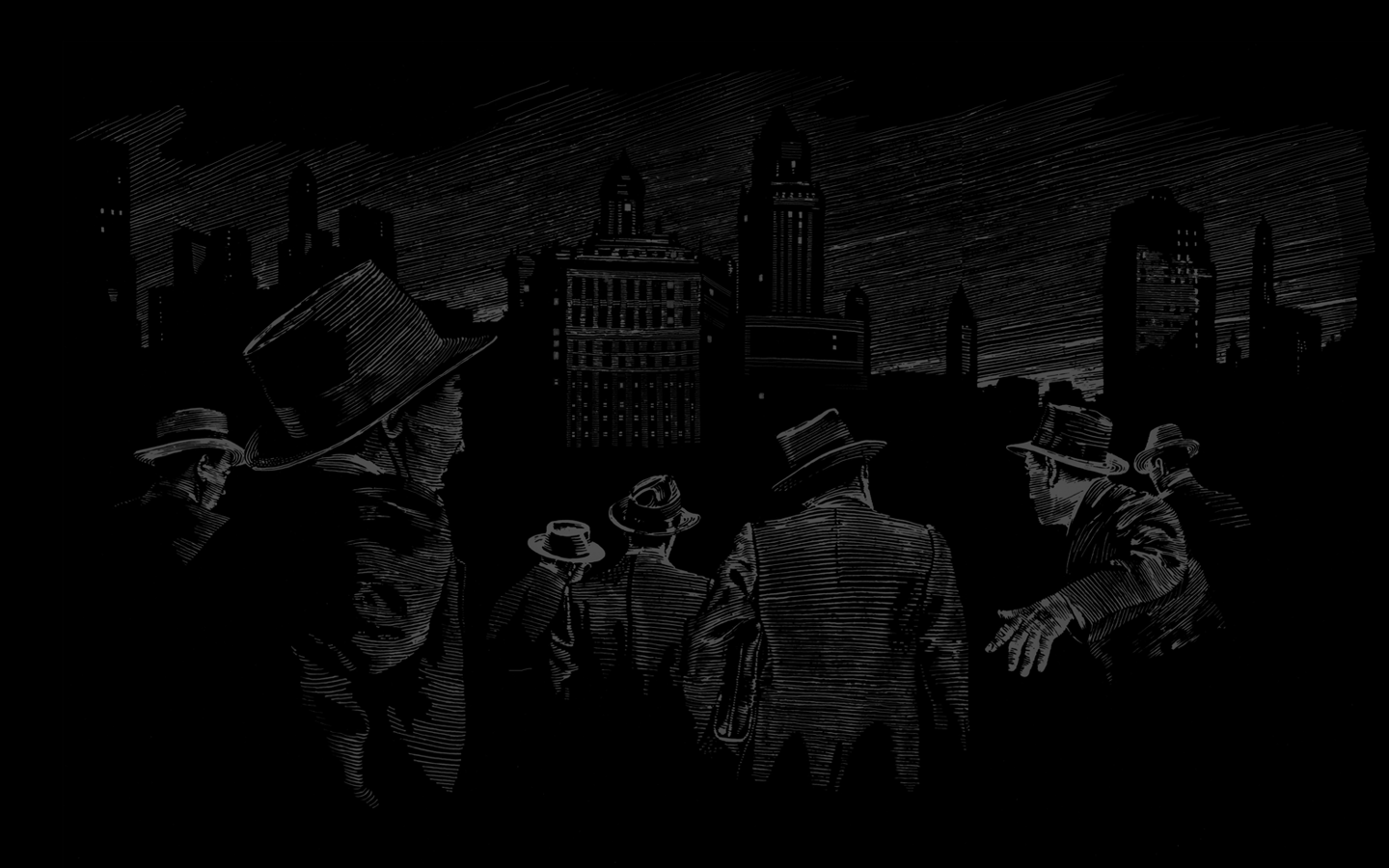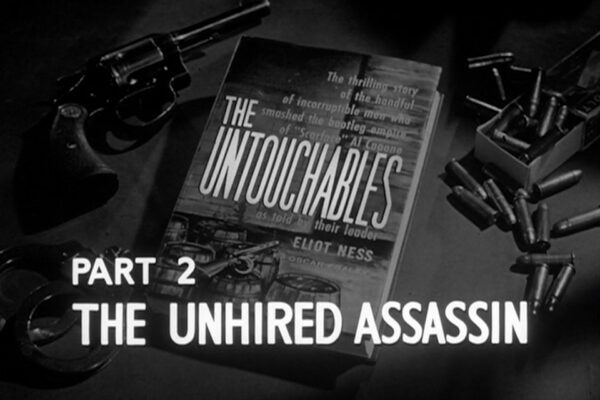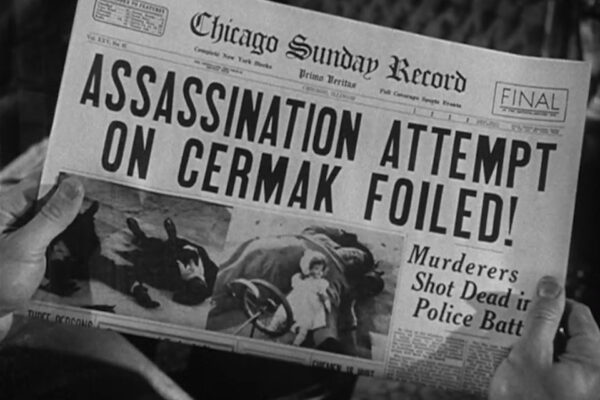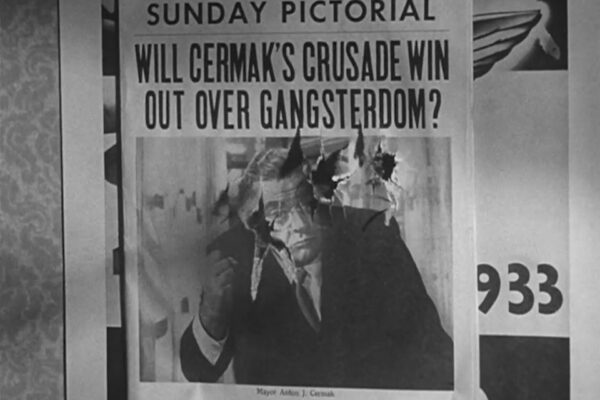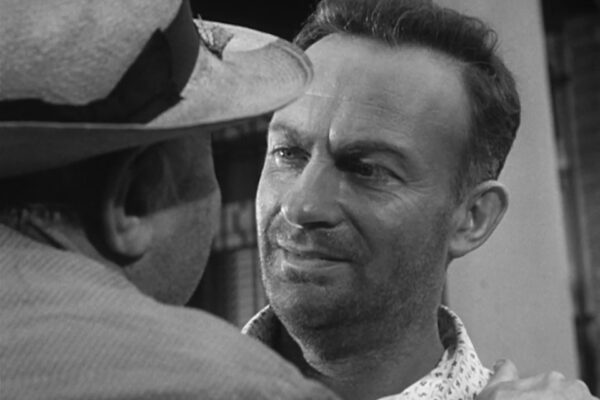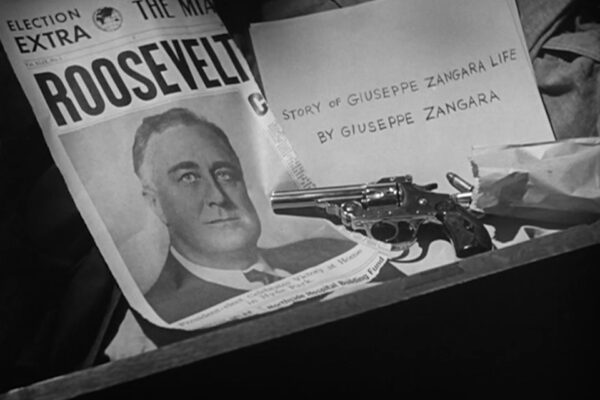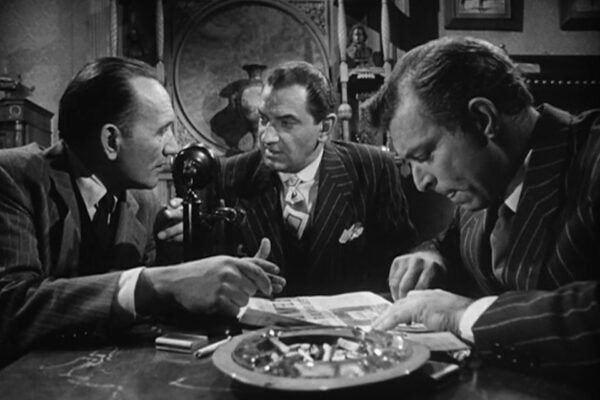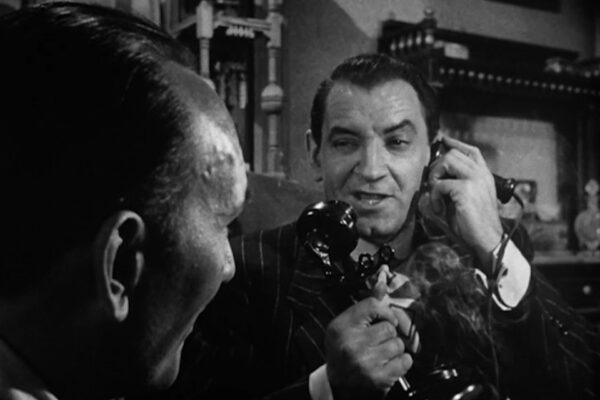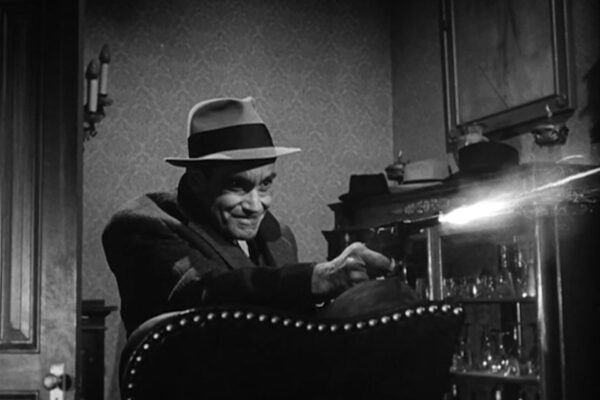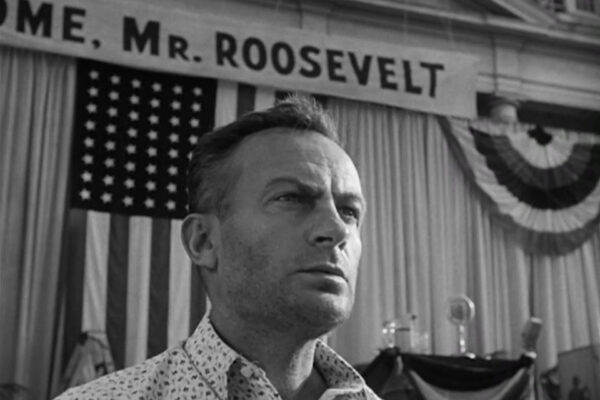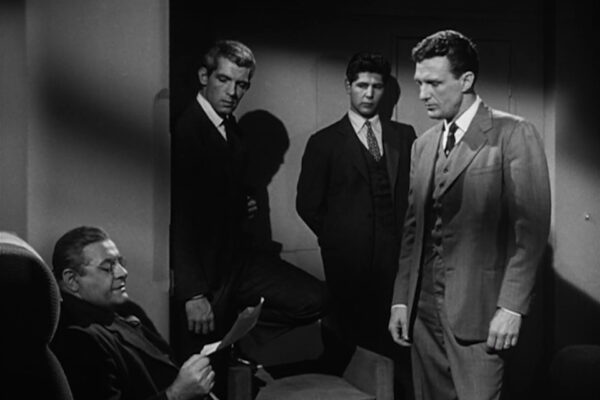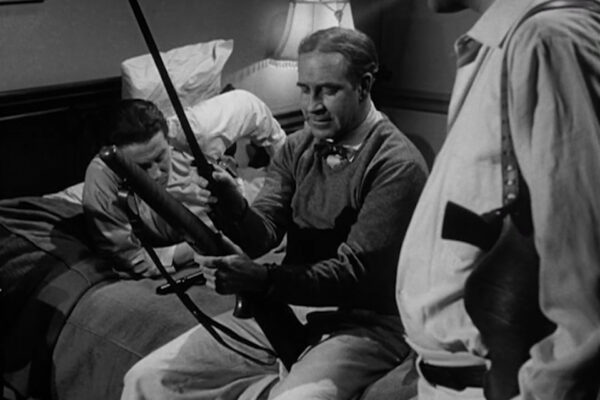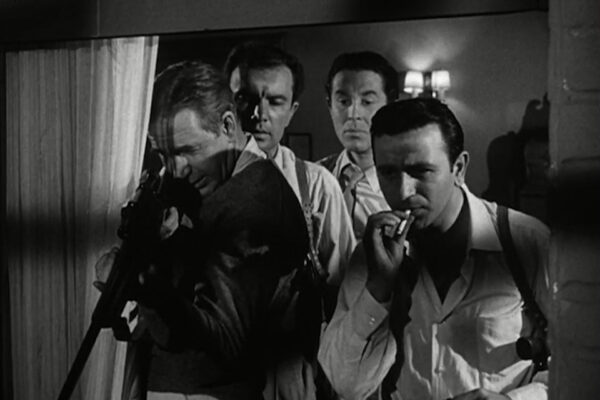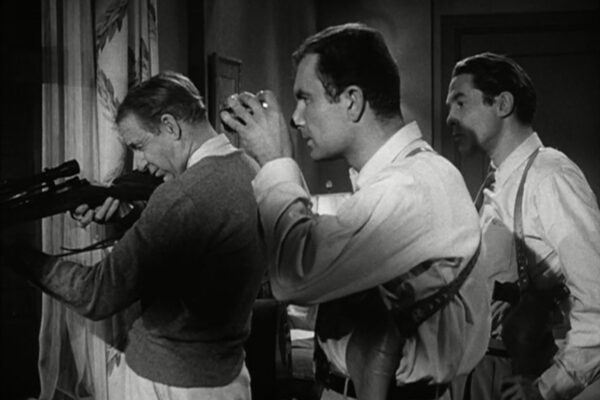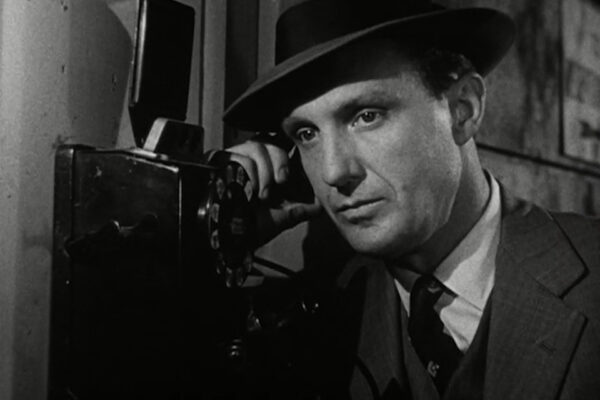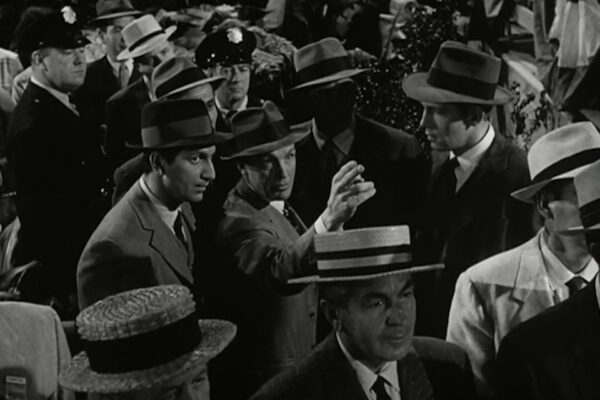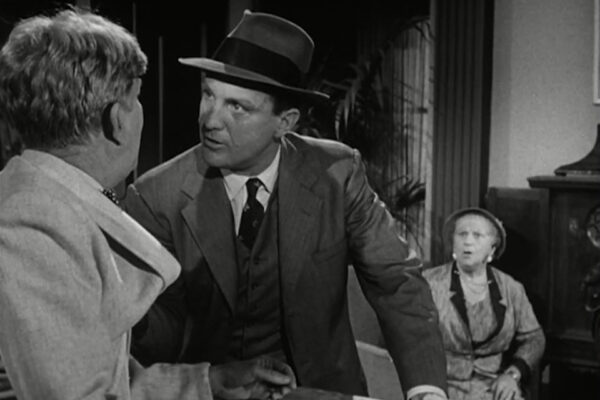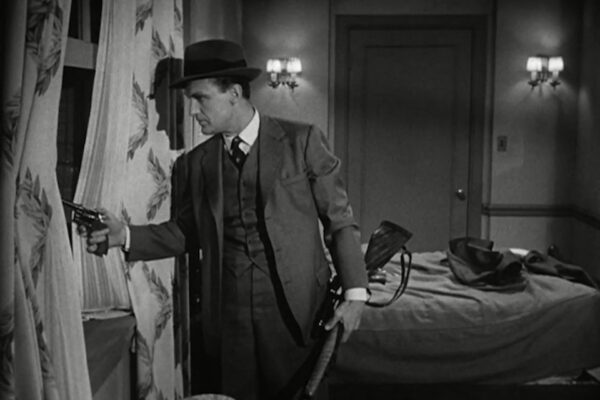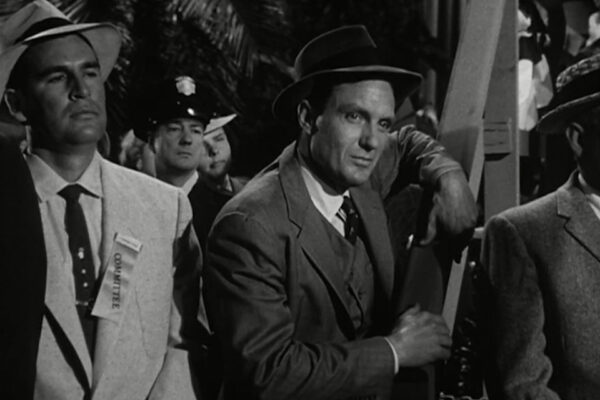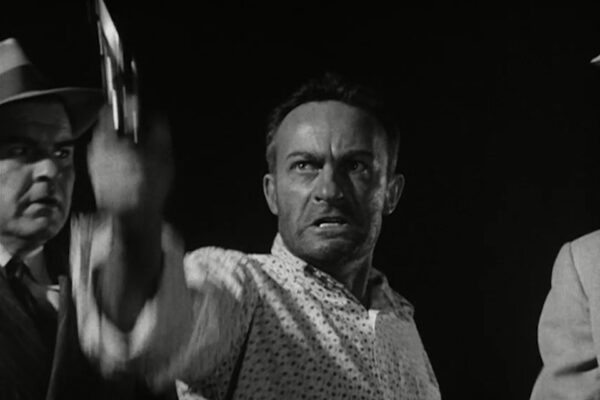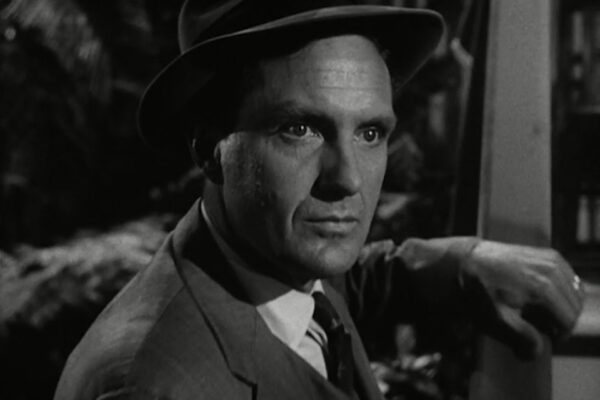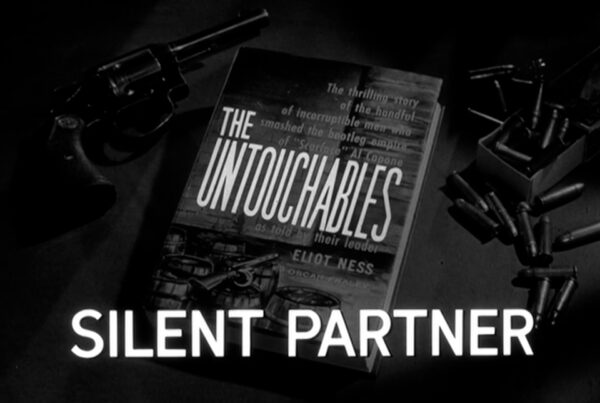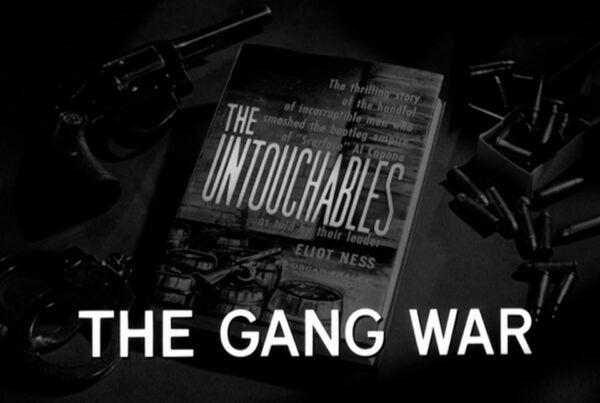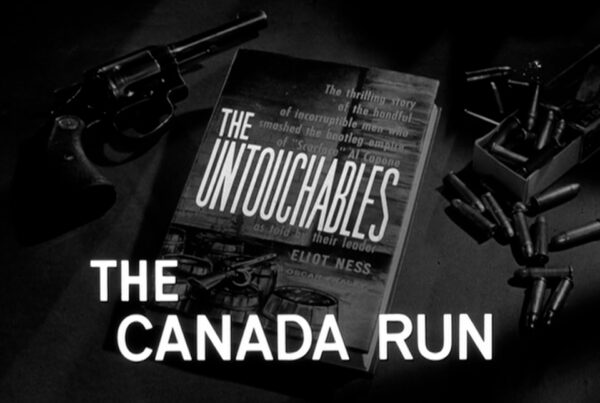PART TWO OF THE UNHIRED ASSASSIN
Airdates: March 3rd and September 15, 1960
Teleplay by William Spier
Directed by Howard W. Koch
Produced by Joseph Shaftel
Director of Photography Charles Straumer
Special Guest Star Robert Middleton
Featuring Joe Mantel, Robert Gist, Bruce Gordon, Lee Van Cleef, Frank de Kova, Percy Helton, Sterling Holloway
“The men behind the attempted murder of Cermak were the gang who had served Al Capone in enforcing a reign of terror during 13 years of Prohibition. In the absence of Capone, serving time in Atlanta, his hatchet man, Frank Nitti, ruled the roost. Nitti’s board of directors in the operation of horse parlors, gambling joints, bawdy houses and other rackets were Louie ‘Little New York’ Campagna, enforcer of protective rackets; Frank Diamond, protege and devoted disciple of Al Capone, one of the original Capone gunmen; ‘Three Finger’ Jack White, Eddie Zion, general troubleshooters for the organization. Crusading activities of Chicago’s mayor had stepped up the processes of law enforcement to such a point as to severely cripple the operations of Nitti and company. And, rendered desperate, that gang had agreed that Cermak must die. The failure of the first assassination attempt only meant that greater care would be taken next time.”
Learning that Cermak will travel to Miami to attend a rally for President-elect Franklin Roosevelt, Nitti hires New York hitman Fred “Caddy” Croner for the task. But the previous attempt on Cermak spurs Ness into action, and Nitti’s headquarters are raided just as the mob finalizes the details. In a secret letter to Capone, written by one of Nitti’s men, Ness learns of the plot and secures Croner’s identity from telephone company records. With no police record and hiding his arsenal in a golf bag, Croner is difficult to trace, but the Untouchables head for Miami armed with the knowledge that the mayor is a marked man and set to die in front of 10,000 people.
Meanwhile, Zangara wanders the streets of Miami aimlessly until befriended by an essentially harmless little wino named Jacco, in whom Zangara confides. But before long, Zangara’s rendezvous with history nears. On his way to board a bus at will take him to Bay Front Park where Roosevelt is scheduled to arrive, Jacco discovers that Zangara is packing a pistol and indeed on his way to shoot Roosevelt. Alarmed, Jacco attempts to warn the police, but they fail to take the little drunk seriously.
Frustrated by a lack of details, and with only minutes before Roosevelt’s arrival, Ness receives word from New York that Croner had been known to be an excellent rife marksman in the Army. It suddenly dawns on Ness that Cermak’s assassin won’t be a man with a pistol in the crowd.
Bounding into action, Ness and his men race to a nearby hotel overlooking the park where they confront the desk clerk, who sends them up to Croner’s room. With Cermak in the assassin’s crosshairs, Ness shoots down the hotel door and Croner is eliminated. The crises over, Ness returns to the rally greatly relieved, as various dignitaries, including Cermak, climb down from the bandstand to greet Roosevelt. But suddenly a little man with a gun rises to scream “Too many are starving!” and fires twice at Roosevelt. Cermak falls.
“Eliot Ness, in silent, unbelieving horror, tried to make himself realize what had happened. The man he had saved, not five minutes ago from death, had been struck down, without plan or purpose, the victim of a wayward bullet that had been intended for another man. The Secret Service agents rushed the President-elect out of the place, but in spite of their frantic objections, Roosevelt ordered the car stopped and had Cermak placed on the seat beside him. Before he lapsed into unconsciousness, the mortally wounded Cermak looked in the face of the man who held him cradled in his arms and spoke seven words.”
In the crush of confusion, a newspaperman asks Ness what Cermak had said to Roosevelt before speeding away toward the hospital. Stunned, virtually speechless, Ness replies, “I’m glad it was me – not you.”
REVIEW
The final few minutes of The Unhired Assassin features actual newsreel footage of Roosevelt’s Miami motorcade, just before Zangara, only a few rows back into the crowd, pulls out his pawn shop special. These few intense, mesmerizing, remarkably seamless moments are as close as the series will ever get to non-fiction.
The second installment maintains the high quality featured in the first, and concludes the story with the predictable, but no less profound climax. Weak moments are few. Two characters, Percy Helton’s elfish, monkey-like wino, Jacco, and Sterling Holloway’s urgent, goofy, fumbling Horace De Vilbill, a chap that would better inhabit a Marx Brothers film, seem a bit more like comic relief than they really should, which dates the production slightly. Their scenes do not seriously impair the conclusion, the most powerful of any in the series.
Forgivable too, is an often-used convention of the theater of sorts, in which characters get away with not having to mess with reality, Murphy’s Law, or anything else involving the space-time continuum: Ness could simply not have gone from a mobbed Bayfont Park to the hotel, a full city block away, locate a suspicious guest, take him down and return to his perch near the grandstand in anything less than half a day, if at all. On screen, he does it in under five minutes. This device simply tightens the pace, and viewers, indeed critics of an older school don’t seem to mind that sort of convenience. Heroes, after all, are not bound by the laws of physics.

Screenwriter William Spier would win a WGA award for his work on The Unhired Assassin.
Cermak is rendered as a wonderfully sympathetic figure – contrary to the historical counterpart that had a closet full of skeletons of his own – but it makes for great character drama. Award-winning screenwriter William Spier, who had previously brought detective Sam Spade to radio, would also write the two-parter The Big Train. Spier uses Cermak as a window to comment on Ness’ own unfailing devotion to his job. Cermak refuses to let the “scum” triumph, regardless of cost. Ness views Cermak as a counterpart in the fight against injustice and his character manages to reveal a new shade of humanity in Ness. Apart from The Untouchables themselves, this portrayal of Anton Cermak highlights as one of the few, truly righteous good guys that the series will ever feature. Though we never get to see Ness grapple with the aftermath of Cermak’s death, it is easily felt thanks to the strength of Middleton and Stack’s performances.
Curiously, Zangara is portrayed as addled and misbegotten, but The Unhired Assassin refuses to make him an outright villain. Zangara, as Winchell notes, is only a victim to the “roar of destiny” in his brain. Judgment of the character is left entirely up to the audience.
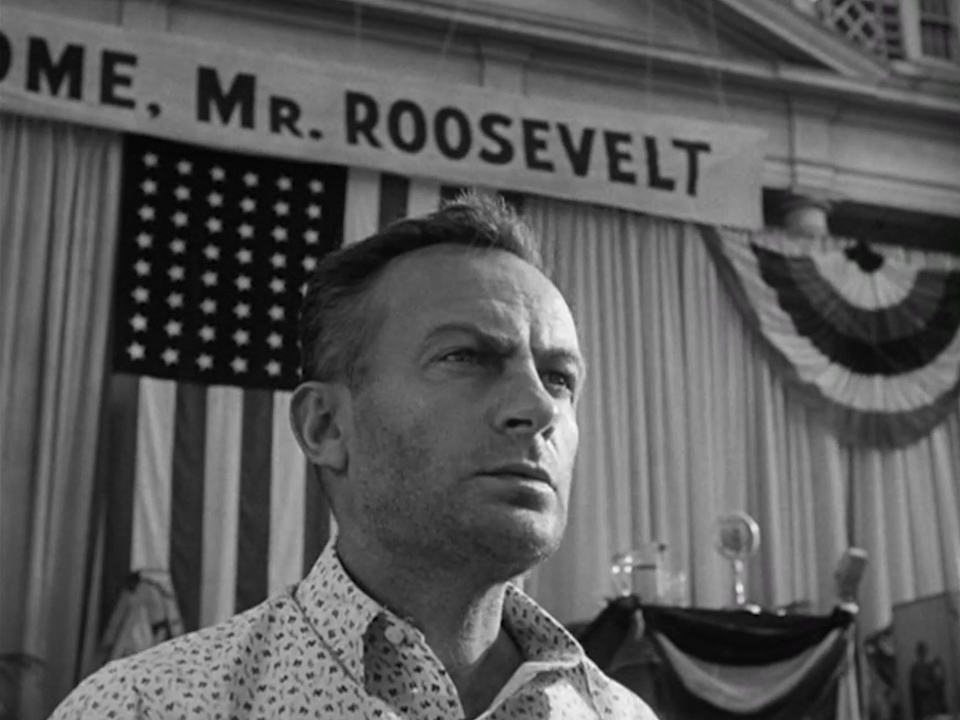
The obsessive Zangara (Joe Mantel) scouts Miami’s Bayfront Park.
The February 27th, 1960 edition of TV Guide featured a cover story entitled Why The Untouchables Are Unbeatable. Quinn Martin discussed the series in philosophical detail, and insisted that the primary purpose of the series was not, as many believed, historical accuracy. The Untouchables was coming under fire on numerous fronts for knitting real stories together into whole cloth. No better example of this exists than in the story of The Unhired Assassin.
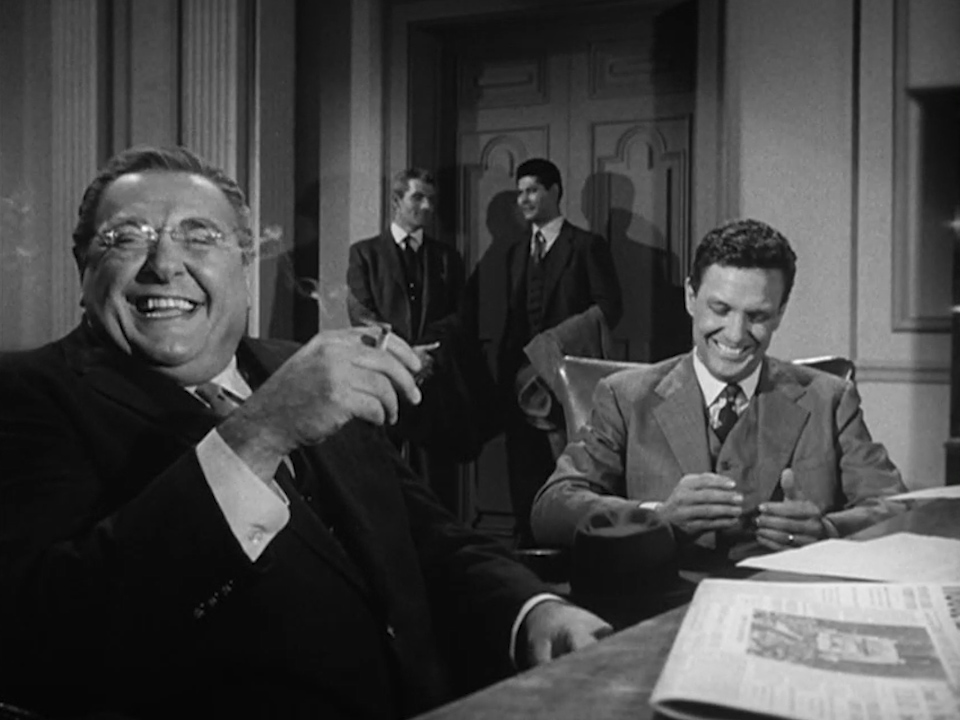
In a way, Ness’ devotion to Cermak is indicative of the character’s zealousness in seeing that good triumphs over evil.
It isn’t known if the real Eliot Ness ever actually met the real Anton J. Cermak, but they did indeed share reasonable proximity in Chicago in 1933, a splendid basis for thrusting them together for television. But it annoyed the historians who were annoyed any time the record was distorted for the purpose of dramatic entertainment, and with good reason. Eliot Ness was now well on his way to becoming a national folk hero and viewers wanted to believe that he was everything Quinn Martin’s research staff said he was. But it was much easier to sit back on Thursday night and watch history unfold, than it was to wander down to the public archive and dig out the record on one’s own. Thus began the great public debate over the authenticity of Eliot Ness and the Untouchables.
While Tolstoy is credited with having advised novelists to wait at least 50 years before fictionalizing historical events, no one cared to impose a specific statute of limitations on what television could or couldn’t do, and the time-lapse between news and script has all but vanished in recent times.
Charles Russell’s You Are There, recounting great moments in history as if television could have covered them – curiously foretelling how the medium would one day cover the Vietnam War – was simply taken at face value. The stories were true, simply recreated for television. But prior to 1959, Eliot Ness was an obscure figure. His sudden thrust into the national limelight required a more objective approach than a sensational weekly series that made him out to be the greatest law enforcement legend since Matt Dillon.
After the series went into syndication, Desilu cut the two programs into a single, feature-length affair and renamed it Gun Of Zangara. For a time, The Unhired Assassin, as well as The Big Train, a controversial two-part episode from the Second Season cut into Alcatraz Express, were included in domestic syndication. But early on, the four hours were removed from the series altogether and shown only in their clumsy feature formats, crudely mastered from 16mm negatives. They were returned to their original series format when transferred to video masters in the late 1980s, but home video copies were released with very nearly as much clumsy editing as Gun of Zangara and Alcatraz Express in the remarkably insensitive Columbia House collector’s editions released in 1993.
QUOTES
CERMAK: I’ve got to do it. I’ve got to. Mr. Ness, I’m the mayor of a great city, I want to go and talk to the next President of the United States. I’m not going to let some dirty scum, some hoodlums, prevent such a meeting. No. I can’t go on skulking in hotel rooms, hiding behind body guards the rest of my life. Is this what it means to be a servant to the people? If so, how long can you go on being protected? Sooner or later you gotta go into a bathroom to wash your hands. Sooner or later you take your children to the circus. You understand what I’m saying?
NESS: I understand.
CERMAK: You of all people, you take your life in your hands every day of the week. Why? It’s the job you picked. Same for me. Like we said that morning we had breakfast together. I’m in a tough spot. What’s the use of going on living if everything is safe and soft? No. We won’t say anything more about it. Eliot, I appreciate everything you want to do for me. If there were more people like you around this country would be in good shape again.
OBSERVATIONS
• This is one of the only Untouchables episode to ever coincide with the anniversary of an event it features. In this case, The Unhired Assassin aired 27 years to the month of Cermak’s assassination.
• The opening title card of the first part uses the roman numeral “I,” but in the second part the title card reads “Part 2” with the number instead of a numeral.
• Screenwriter William Spier won a 1961 WGA Award for his work The Unhired Assassin. Fresh from winning a previous award for his work on the radio drama, The Adventures of Sam Spade, Spier was heralded as a “top notch” creator of suspense-type dramas” in a 1949 issue of Radio Mirror.
• Director Howard Koch would go onto produce the much-acclaimed The Manchurian Candidate in 1962.
• You can see Robert Stack wipe his eye after entering Croner’s hotel room, likely as a result of the smoke and debris from the blanks being fired.
HISTORICAL NOTES
• History records that on December 19th, 1932, Nitti’s office was raided by Chicago Police and Nitti was shot three times, but ultimately survived, lending historical precedent to Ness’ raid on Capone headquarters.
• After Cermak’s death on March 6th, 1933, the conspiracy theorists had a field day. Reports circulated widely that the Chicago mob was involved and had contracted Zangara to pull it off. Curious links were established.
• “I’m glad it was me – not you” were reportedly Cermak’s words to Roosevelt according to the Chicago Tribune. However, the quote was never attributed to a witness and historians doubt it was uttered, thus making a charming narrative convenience that the writers attributed it to Eliot Ness.


